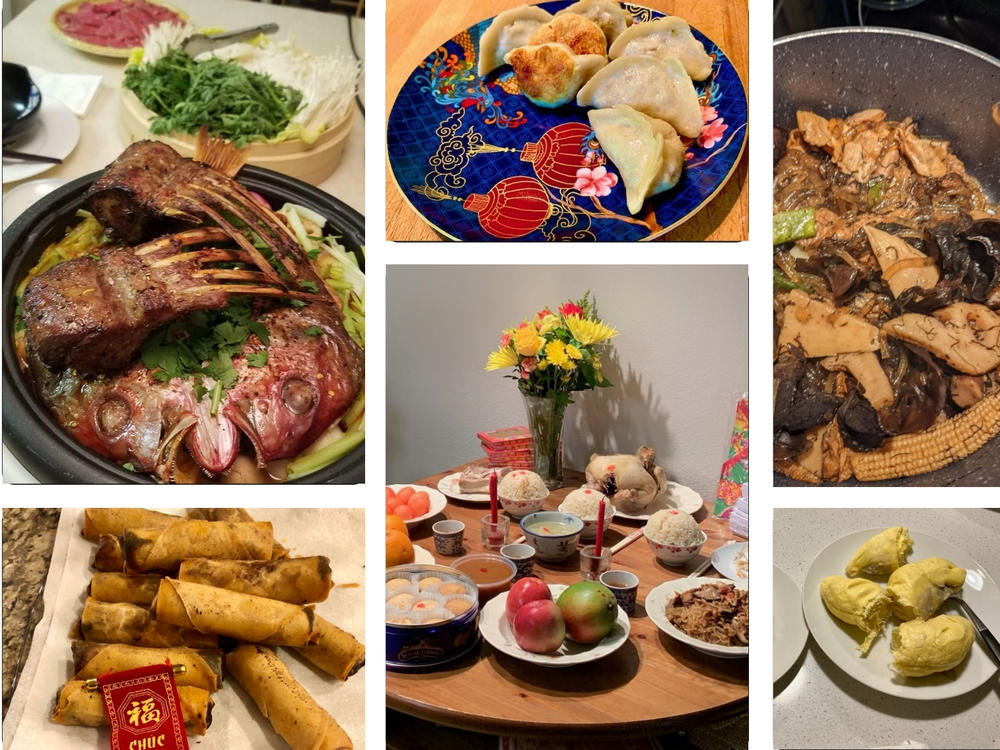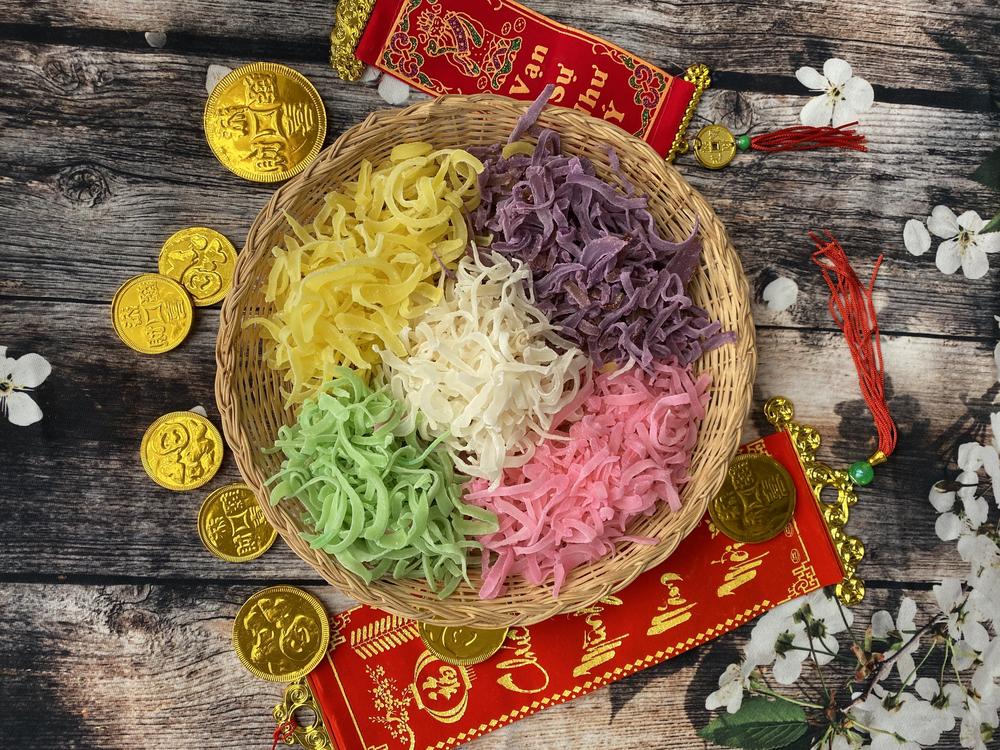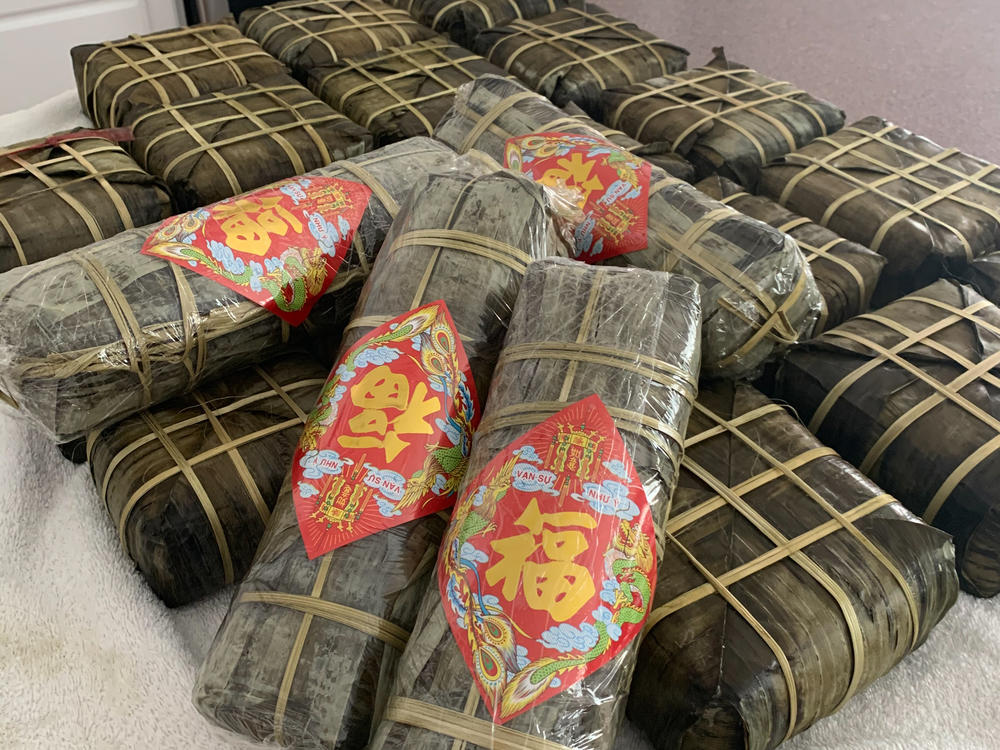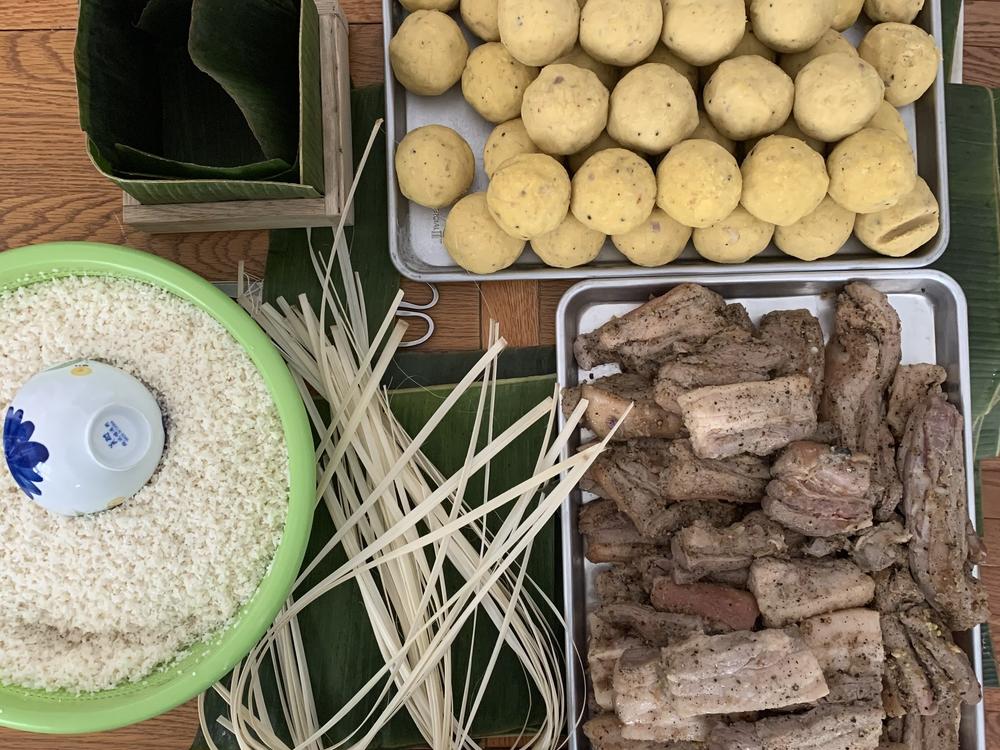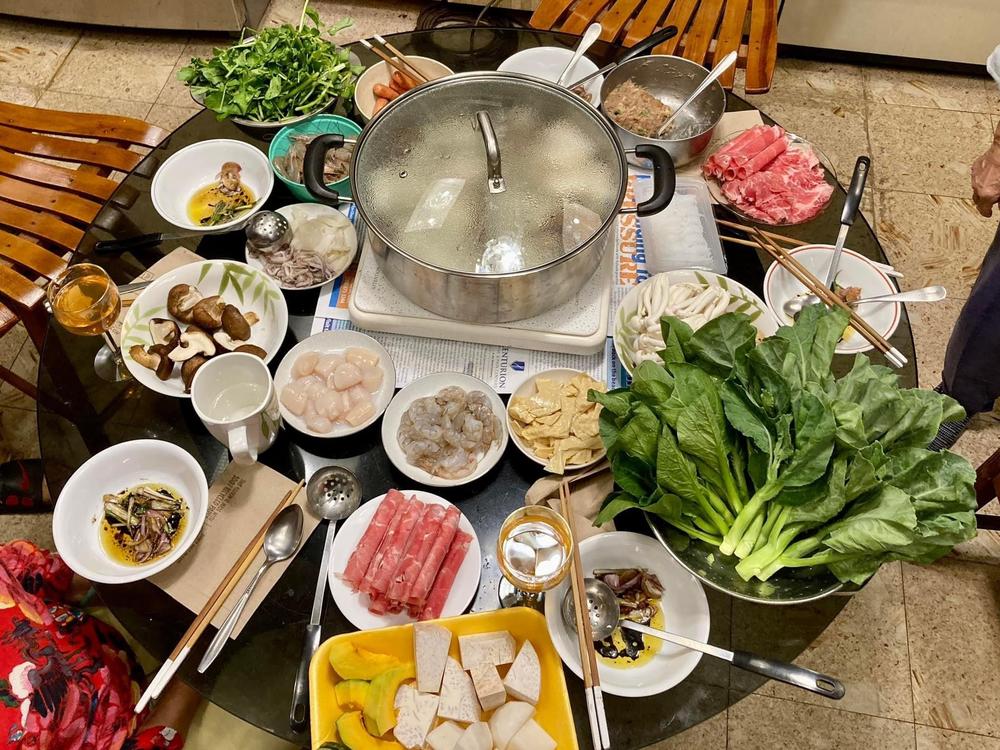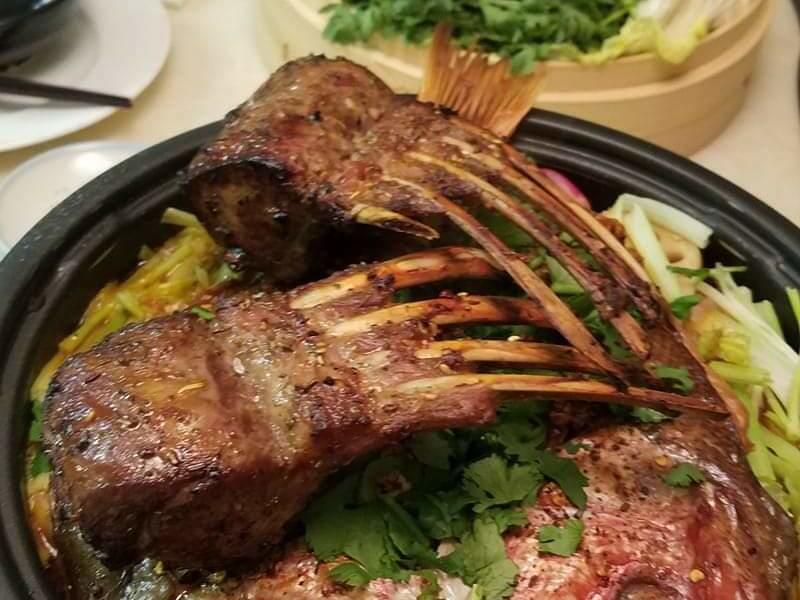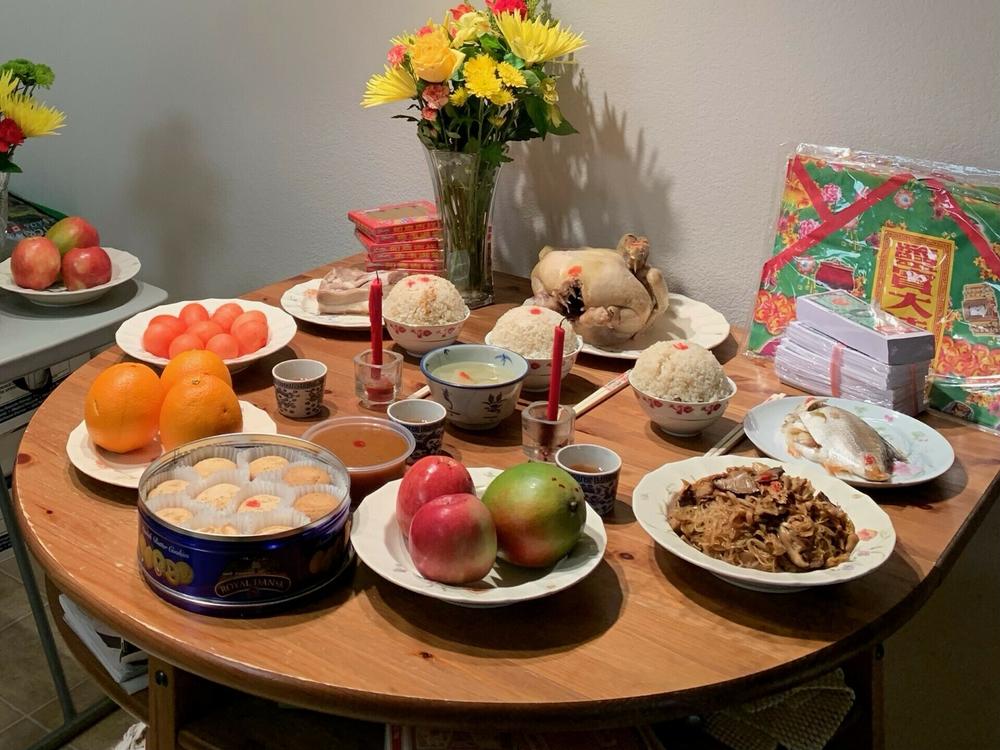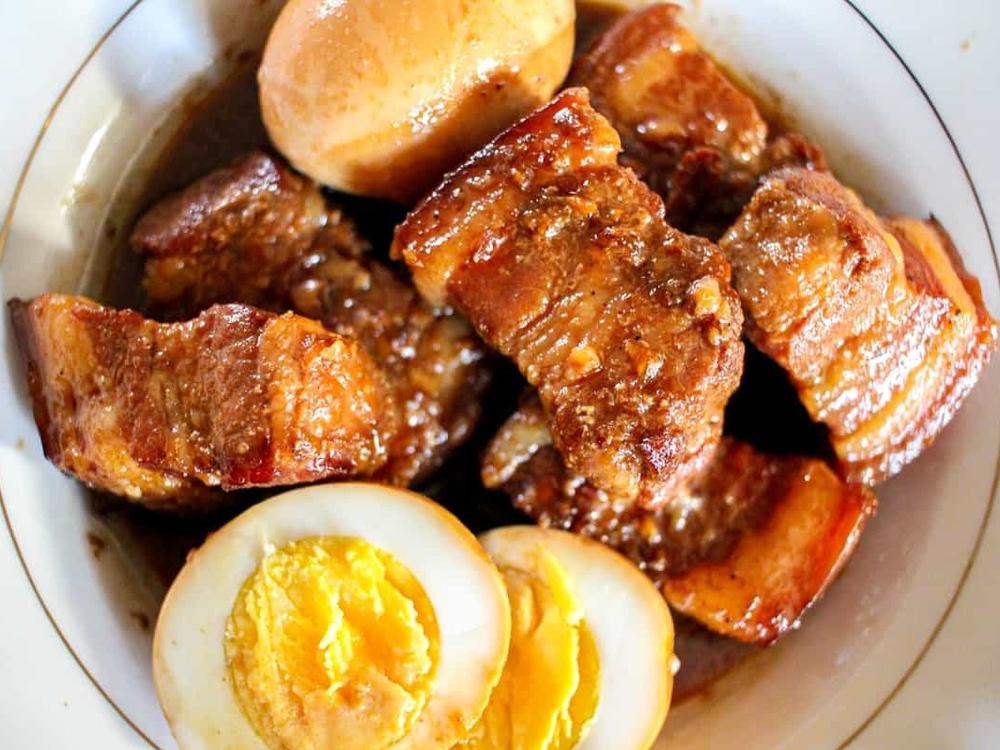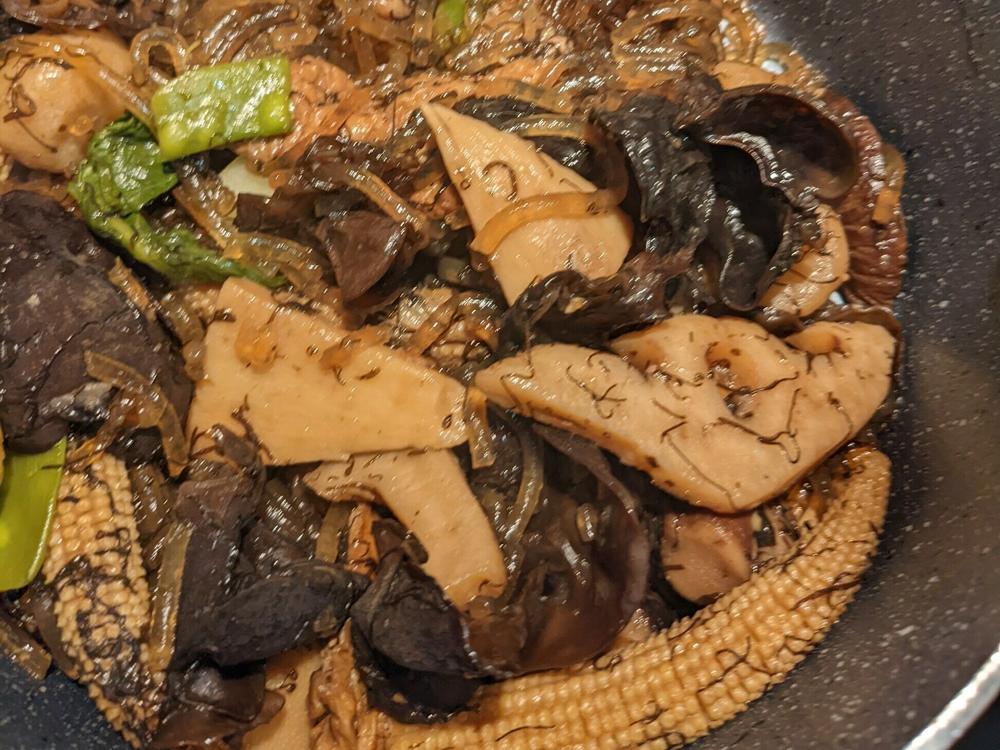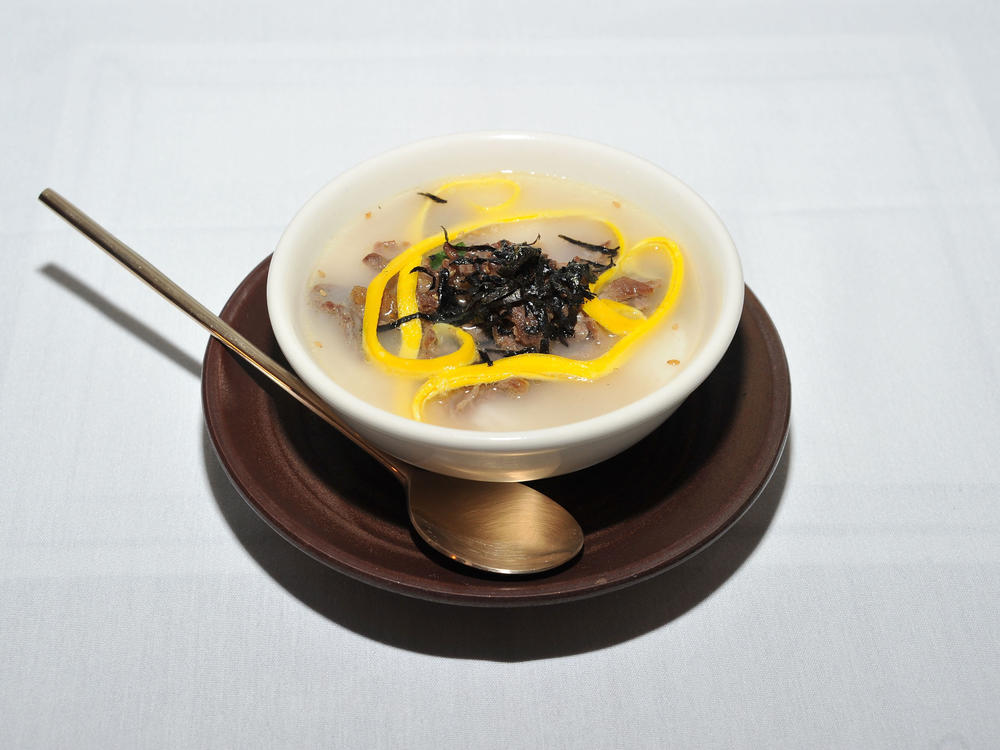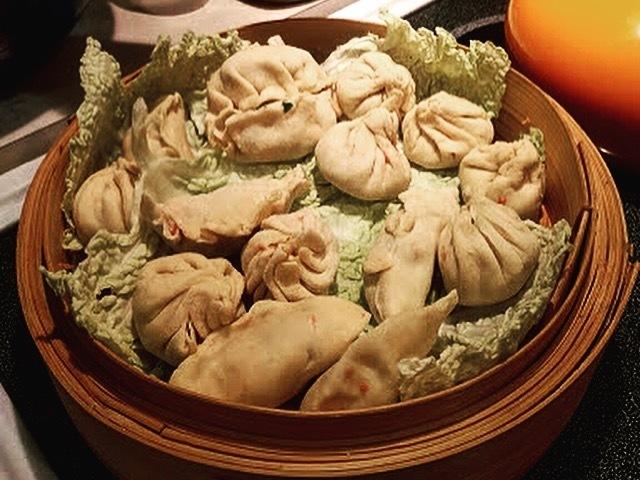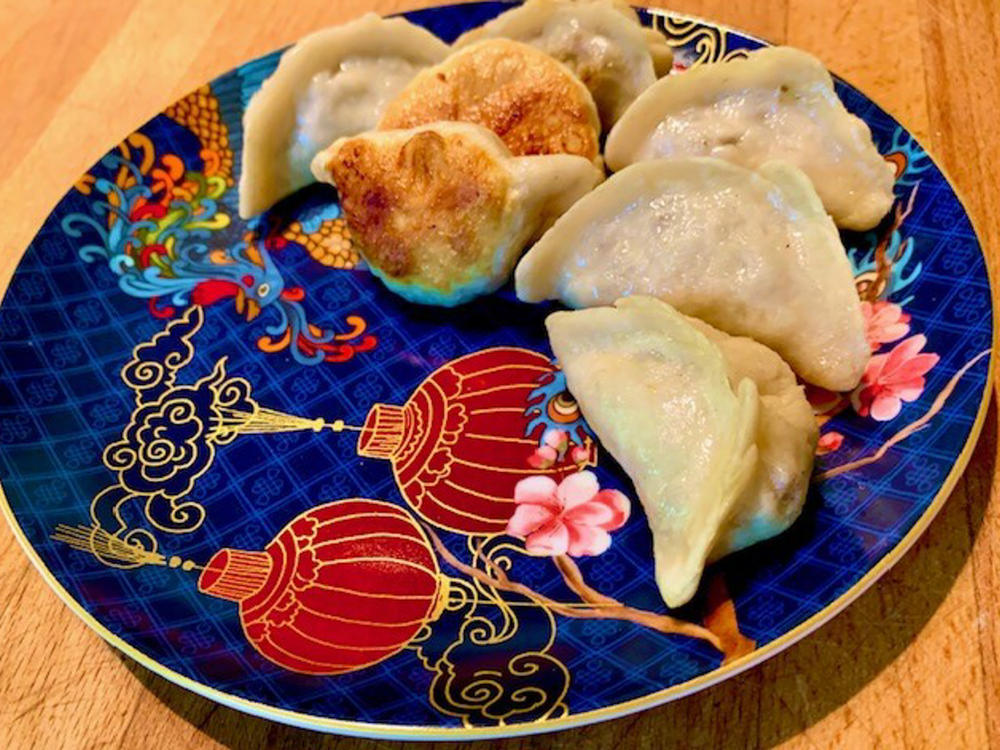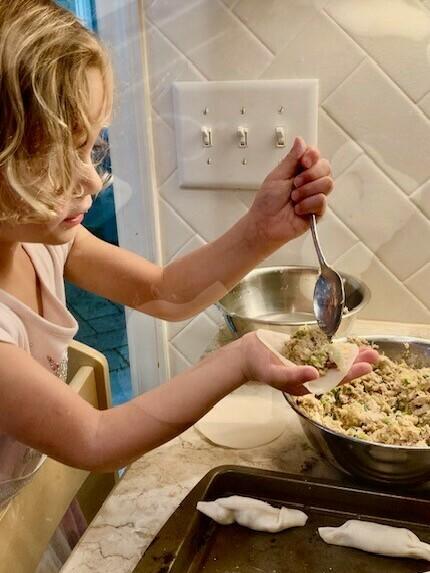Section Branding
Header Content
Food holds special meaning on the Lunar New Year. Readers share their favorite dishes
Primary Content
More than a billion people worldwide will celebrate the Lunar New Year on Saturday as they usher in the Year of the Dragon. It's called Tet in Vietnam, Tsagaan Sar in Mongolia and Seollal in Korea. Whether it's celebrated in Asia or abroad, the annual holiday is a time for many to honor elders, spend time with family, reflect on the past year and wish for a lucky year ahead.
Like most holidays, a bountiful spread of food is essential to Lunar New Year festivities. In my Vietnamese household, rice cakes called banh chung and candied fruits called mut are as essential to the New Year as turkey and mashed potatoes are to Thanksgiving. Traditional foods vary across Asian cultures. Some have even evolved as Asian diaspora communities invite others to share in their traditions.
I wanted to know what dishes NPR readers couldn't go without on the Lunar New Year. These were some of the dishes that stood out as favorites, plus one special recipe a reader created for her grandchildren.
Responses have been edited for length and clarity
Banh chung
Vietnam's quintessential Lunar New Year dish is a labor of love. Banana leaves are meticulously washed, then wrapped around sticky rice filled with pork belly and mung beans. The cakes are boiled for hours before they're ready to eat. It often takes a whole family to make the dish.
For Yolanda Vo, the dish reminds her of her refugee parents, who brought their tradition to the U.S. nearly 50 years ago. Sahra Nguyen watches her mom make the "shockingly laborious" cakes every year. She wrote that she sees her mom's love for her family in her dedication to making the dish. "I feel deeply grateful for the opportunity to enjoy each bite because I know it's one of her biggest displays of love," wrote Nguyen.
Hot pot
There are endless varieties of Hot pot across Asia. It's also known as Chinese fondue or huoguo in China. In Vietnam, it's called lau. In Japan: shabu-shabu. All the dishes involve cooking meats, noodles and vegetables communally in a pot of broth.
"It gathers the family around a single pot to linger and commune with each other," Alvina Chu wrote. "Everyone gets to pick what they like — and the prep is no-stress for mom!"
Amy Fedun wrote that she loves a steamy pot on cold days. She tops her special hotpot with a whole grilled or baked fish, then stacks grilled lamb chops cut to look like bear paws on top of the fish. "There's a [Mandarin] saying that literally goes, 'you can't have both fish and bear paw,' meaning you have to make a choice between two desirable things," wrote Fedun "Well, here at my new year's table, you get to enjoy both."
Fresh fruit
The highlight of Anh Therese McCauley's Lunar New Year meals is when her mother brings out the durian fruit. It's an acquired taste. Its smell has been described as similar to a gas leak. But many covet its custardy taste and texture, calling it "crème brûlée on a tree." "It's such a weird fruit, but we can claim it as ours in the Asian diaspora, and I can't help but love that," McCauley wrote.
Jessica Hoang's Vietnamese fruit of choice is the mang cau, or custard apple. Her grandma always had it in her home during the new year. Her mother would tell her stories of growing up eating the fruit in Vietnam and using the seeds to play a marbles game. "My grandma was an intimidating woman — tough, cold and not afraid to be direct," Hoang wrote. "But her way of showing she cared was giving us food and telling us to eat. In those moments, for a few minutes, a young me was able to be close to my grandma."
Hainanese chicken
Elsy MektrakarnNguyen's family has its roots in Hainan, China, just as this chicken and rice dish does. Hainanese migrants took the recipe with them when they migrated across Southeast Asia. The meal of poached chicken and garlic rice cooked in the chicken's broth is now an iconic fixture in Singaporean street food.
MektrakarnNguyen's family moved to Thailand before her mother was born. Though the new year, or Songkran, is celebrated there in April, her family continued to celebrate the Lunar New Year. Hainanese chicken, or khao man gai in Thai, was often part of the table of offerings to their ancestors.
"The garlic rice was precooked with LOTS of garlic and chicken fat," she wrote. "My house would smell of garlic for days after cooking it. The smells of my childhood."
Braised pork belly
Like many of the dishes mentioned above, a version of braised pork belly appears on many Lunar New Year tables across Asia. In Vietnam, hard-boiled eggs are added to the dish called thịt kho trứng. "Thịt kho paired with white rice is so comforting," Kimberly Huynh wrote. "It braises for hours and it just falls apart when it's ready to be eaten."
Carrie Huang, from Taipei, Taiwan, enjoys a similar dish from Hangzhou, China called Dongpo pork. She wrote that the layers in the pork belly "represent seasons of the year and the good times and challenging times, similar to the rings inside the trunk of a tree showing the tough years and the good years."
Jai
Sarah Low wrote that she used to hate jai, also known as Buddha's delight or lo han jai. Still, she makes this vegetarian dish every year to remember her late grandparents and the culture she grew up in. "It's a dish that is so different than what I cook all year long," she wrote. "It's a great way to remember the past and be mindful of the present."
As for whether she still hates it? "I find I appreciate the flavors, but it's never going to be my favorite," Low wrote.
Rice cake soup
It's not Korean New Year, or seollal, without this rice cake soup called tteokguk. The coin-shaped rice cakes are thought to bring prosperity and riches, and its white color symbolizes a fresh start to the New Year.
Myung Armstrong garnishes her tteokguk with seaweed and julliened egg omelette. She wrote that the warm, savory beef broth and soft, chewy rice cakes bring "very happy memories making it with my mother."
Dumplings
Dumplings originated in Northern China and spread around the world. They are thought to bring fortune in the new year because they're shaped like ancient Chinese money. Zhong dumplings, one of the most iconic street snacks of Chengdu, China, are a key part of Jing Gao's Lunar New Year table.
Mikayla Sanford's dumpling of choice are momos. They hail from Tibet, where the Lunar New Year is known as Losar. "Tibetan's never had much flour or meat, so momos were always prepared for special occasions," she wrote. "My family has been making them since I was a child. We even get together with huge steaming vats to make hundreds of momos during the new year."
RECIPE: Alice Young's "No Fuss Grandchildren's Chinese Dumplings"
This recipe was provided by Alice Young.
Alice Young has a unique dumpling recipe that she calls "No Fuss Grandchildren's Chinese Dumplings." She spent decades as a law partner and wrote that she had to be "creative and quick" with her food. She created this recipe for her "young, blue-eyed and blonde grandchildren." They live in North Carolina, where Chinese communities are scarce. To adapt, Young's recipe uses ingredients that are easy to find and childproof.
Ingredients:
- rotisserie or any cooked chicken or meat or sausage, or firm tofu, diced
- chopped green onions or chives or cabbage, or a mix
- mayonnaise or vegenaise
- hoisin sauce
- oyster sauce
- sesame seed oil
- wonton wrappers
Directions:
- In a medium-size bowl mix equal portions of chicken/meat/tofu and chopped greens.
- Add mayonnaise, hoisin sauce, and a splash of oyster sauce and sesame oil until the mixture has the consistency of a sticky filling and tastes good to the sampling grandchild.
- Put a teaspoon of filling in a wonton wrap, lightly wet the edges of the wrap with water on your fingertips, and seal each dumpling in either a triangle or with a crimped edge, depending on the skill and interest of the grandchild.
- Optional- if the grandchild is forewarned and is not likely to swallow a small toy gold coin, sneak one into one of the dumplings as a lucky dumpling.
- Boil a pot of water and drop the finished dumplings in and cook for 6 minutes, until the dumpling wraps are cooked
- For fried dumplings. heat a pan with peanut or almond oil on medium heat, and fry the dumplings for 5 minutes until crispy on the bottom, add a splash of water and cover for 1-2 minutes until the water has evaporated and the dumpling wraps are cooked.
- Serve with soy sauce mixed with rice vinegar and sugar.
